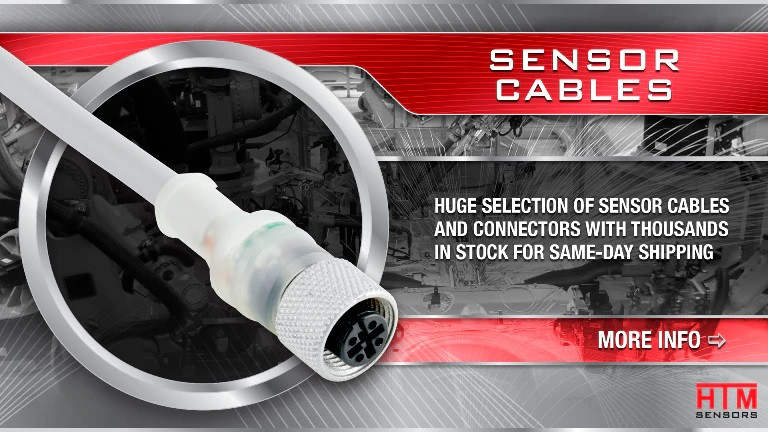Choosing the best sensor for your specific needs can be a bit complicated with so many choices, but it can be made easier by eliminating all the obvious wrong choices. The same can be said for choosing the sensor connectors, which are vital to operational performance. Getting to the right decision all starts with having a complete understanding of your process needs.
Whether you’re developing a process or just look to improve it, you should start with the basics of the process parameters such as temperature, pressure, flow, materials and proximity needs among others. You may know that you need a proximity sensor to detect the presence of an object, but all the details of the process will play a role in the choice that you make.
The material composition of the object is one parameter where metal/non-metal, solid, liquid, granular makeup will affect the sensor choice. In some cases, this will also affect the choice of cables and connectors since liquids can have a bearing here.
Positioning of the sensor to the object is also critical and can be one of the biggest variables in the decision as it involves all aspects of the process parameters and material composition. Here again, sensor connectors will play a big part in the decision process.
For example, inductive proximity sensors have shorter sensing distances relative to other sensor technologies. But the process, the environment, and the sensing cycle will add variables that will affect your choice of cables and connectors as well as the sensor itself.
These factors will also play into the choice of form factor that best fits your application. Automotive sensors as one example must often operate in tight spaces, which makes mounting and the choice of automotive sensor connectors a highly integrated decision.
Sensors used in industrial and manufacturing conveyor systems or process automation will have critical control interface and switching logic needs. Connectivity often comes down to sensors requiring 3-wire DC types, but it may require 2-wire DC and 2-wire AC/DC, which can affect choice, installation, cabling, and wiring.
Process parameters such as high temperatures (more than 80 degrees °C), nearby welding processes, or high-pressure washdown procedures are all factors that will impact the choice of sensor and sensor connectors. These factors will impact the need for a suitable IP rating for the sensor and the composition of the cables and connectors.
Having this information makes it much easier to choose the correct sensor and sensor connectors from the manufacturer. The ideal manufacturer goes far beyond just providing catalogs by delivering expert support that understands the needs of nearly every environment and process where their sensors can be used. These technical support personnel are always ready to help you find the right sensor for your application.
 Canadian Dollars
Canadian Dollars
 USD
USD

